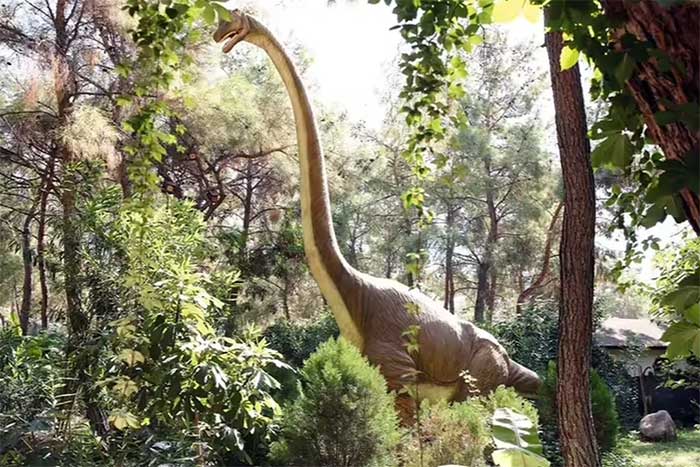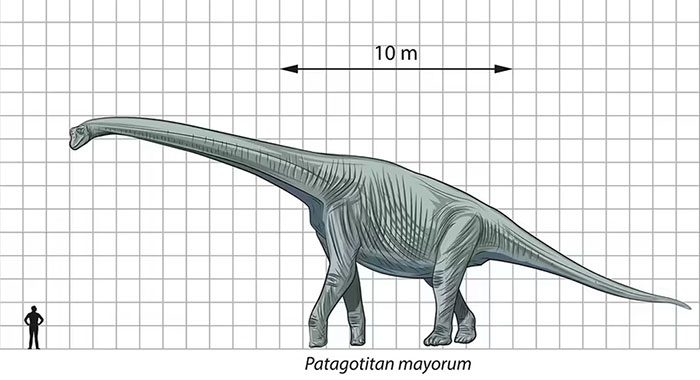For a long time, dinosaurs have represented one of the largest creatures to ever inhabit the Earth. But why did these animals grow to such enormous sizes?
In a study published in 2021 in the journal *The Age of the Cretaceous*, the authors suggested that dinosaurs could be among the largest creatures ever found on Earth, with some reaching heights of up to 37.1 meters.

Many factors contributed to the enormous size of dinosaurs. (Photo: Getty).
However, why did these prehistoric animals reach such large sizes? In other words, what advantages did they have in a world where food sources and competition were always at the forefront?
High Oxygen Levels
The first hypothesis put forth by scientists is environmental factors, such as higher oxygen levels in the atmosphere, which may have contributed to the gigantic size of dinosaurs.
Accordingly, around 3 million years ago, the oxygen concentration in the atmosphere increased from 15% to 19% compared to the earlier periods, though it remained significantly lower than the current level of 21%.
During this same period, the first dinosaurs appeared in the tropical regions of North America and evolved to attain increasingly larger sizes.
This adaptation allowed them to reach areas with higher oxygen levels while avoiding lower regions with dense CO2.
Access to Food

Size comparison of Titanosaur Patagotitan to an adult human. (Photo: Erebormountain).
The existence of the Titanosaur Patagotitan, also known as the long-necked dinosaur, leads us to the second hypothesis for their gigantic growth. This is the ability to efficiently absorb and access food sources.
Inspired by giraffes, scientists suggest that the long necks of Titanosaurs provided them with a significant advantage over other large herbivorous animals.
Specifically, they could cover larger feeding areas and comfortably enjoy food sources that other dinosaurs could not reach. Additionally, they possessed a digestive system capable of processing massive amounts of food.
Scientists estimate that Titanosaurs needed to consume so much that they could not be picky, and their enormous intestines could digest even the toughest plant materials. It is estimated that they spent 22 hours a day consuming 129 kg of various plants.
Light Bones and Unique Respiratory System
Another study has indicated why prehistoric animals grew to such gigantic sizes. This is due to their bones and lungs having a special structure that adapted to this growth.
For example, the giant flying reptile known as Azhdarchid had a wingspan of 10 meters, weighed 200 kg, and soared through the skies long before the first dinosaurs appeared.

Azhdarchid – one of the largest flying reptiles in the world. (Photo: Warpaint).
Research suggests that the bones of the Azhdarchid had a very strong and stable structure, yet were lightweight, allowing them to easily take off from the ground.
Their enormous size also enabled them to fly distances of up to 10,000 miles (approximately 16,093 km) without needing to rest or eat.
Meanwhile, the Supersaurus possessed a relatively complex respiratory system, with air sacs located within its body, greatly enhancing the breathing process and thermal exchange. This is considered a necessary and sufficient condition for achieving a large body size.
Primarily laying eggs and being able to reproduce relatively quickly are also factors that provided reproductive advantages for these large animals.




















































